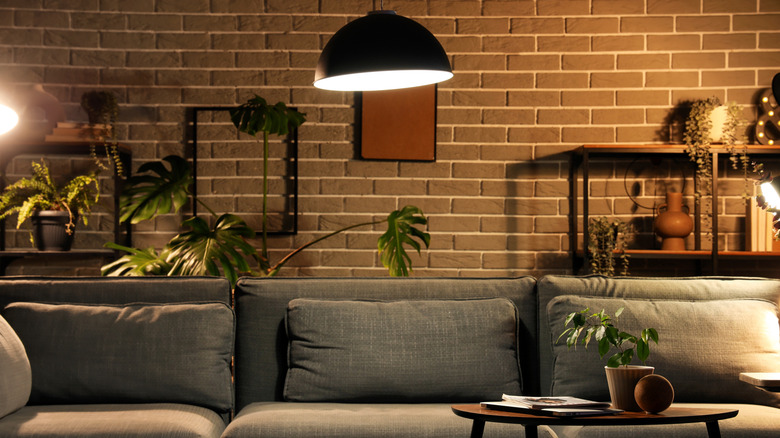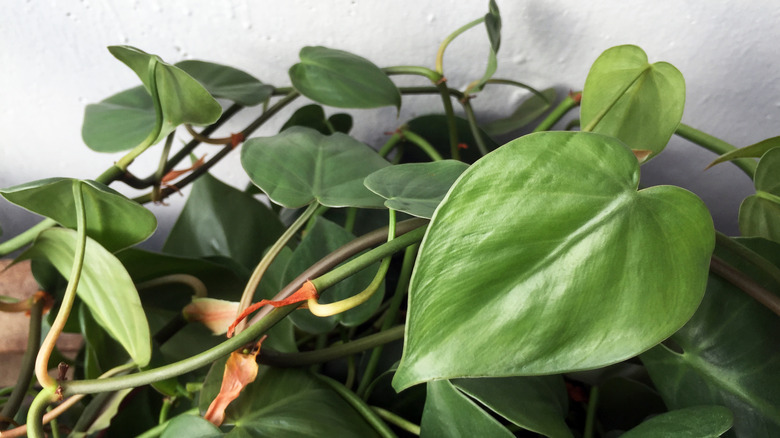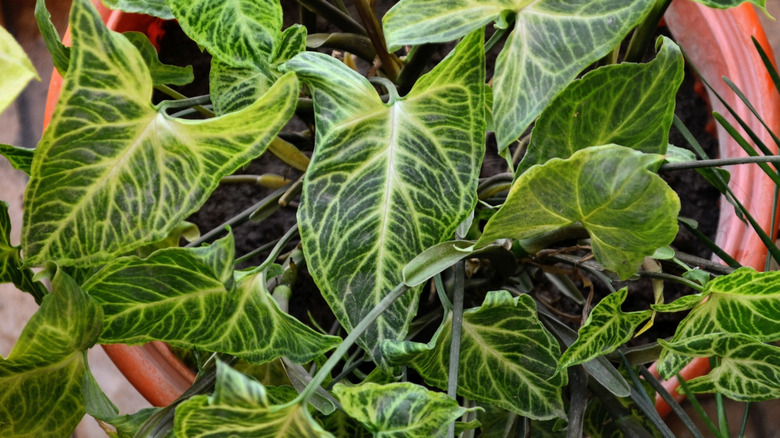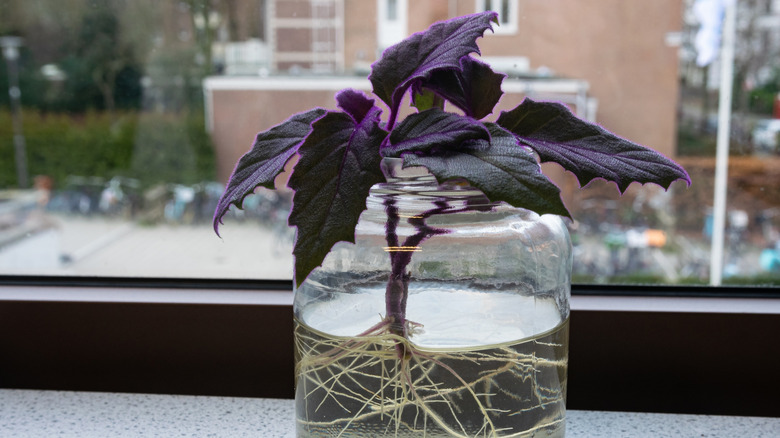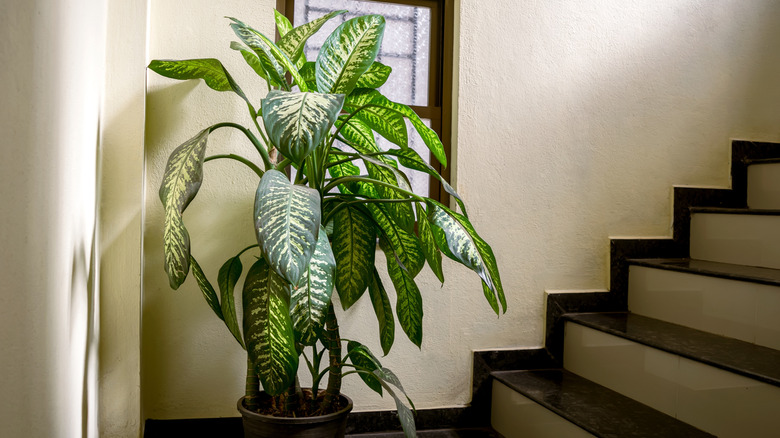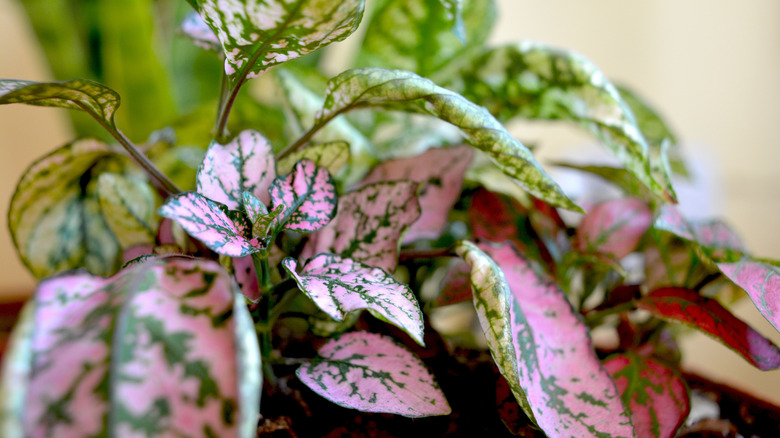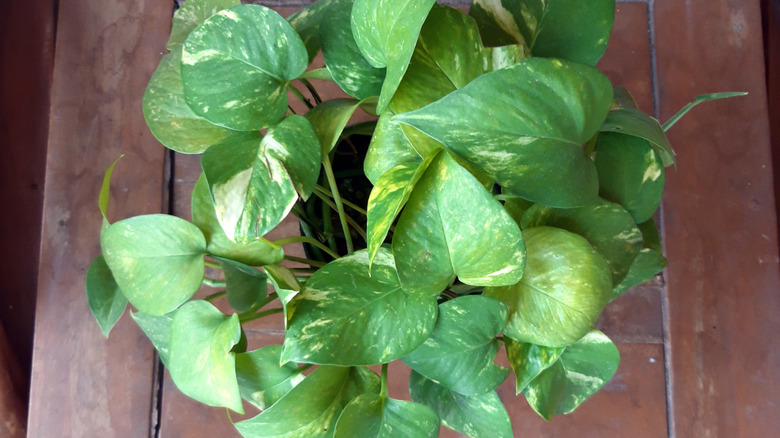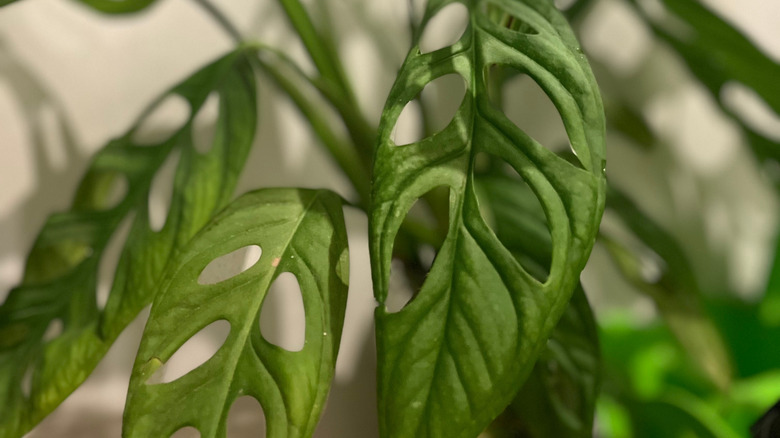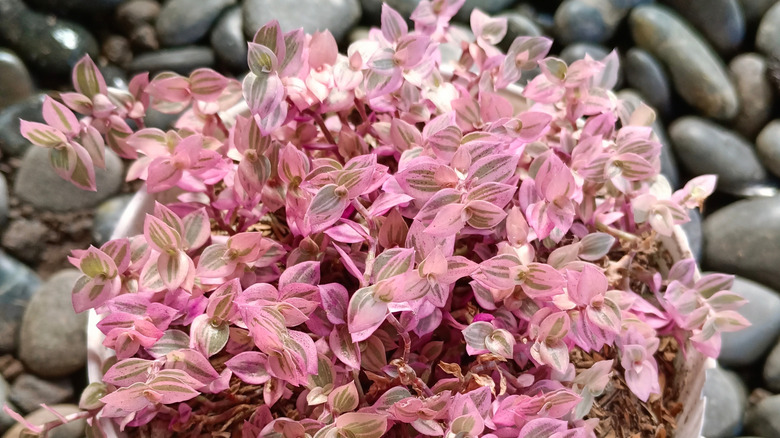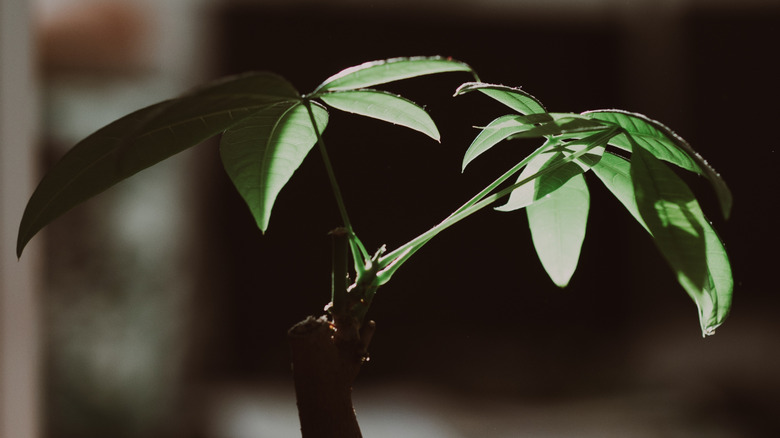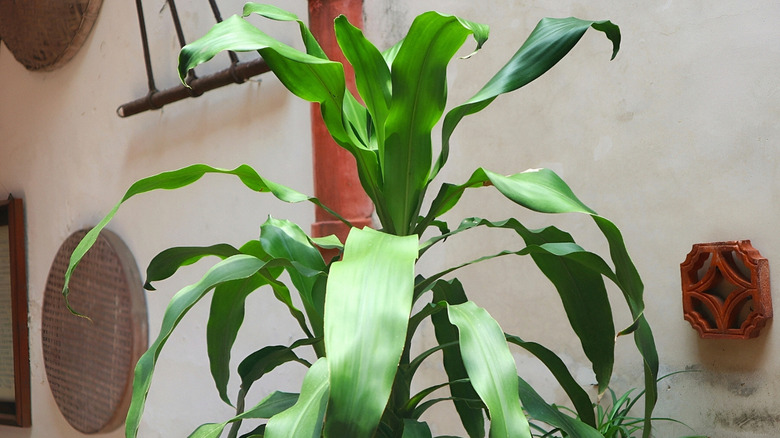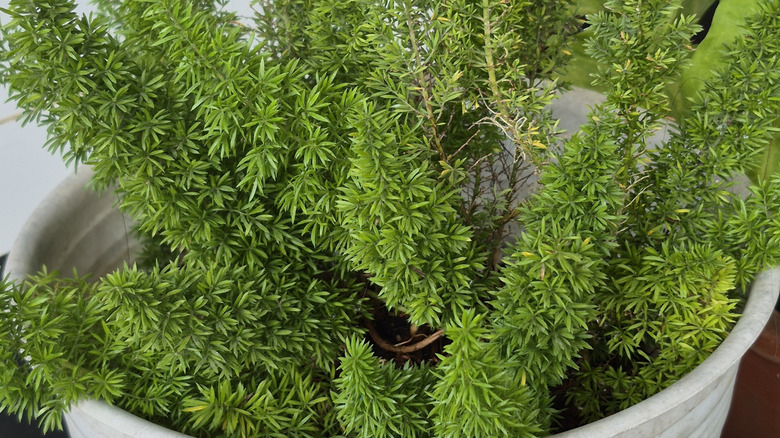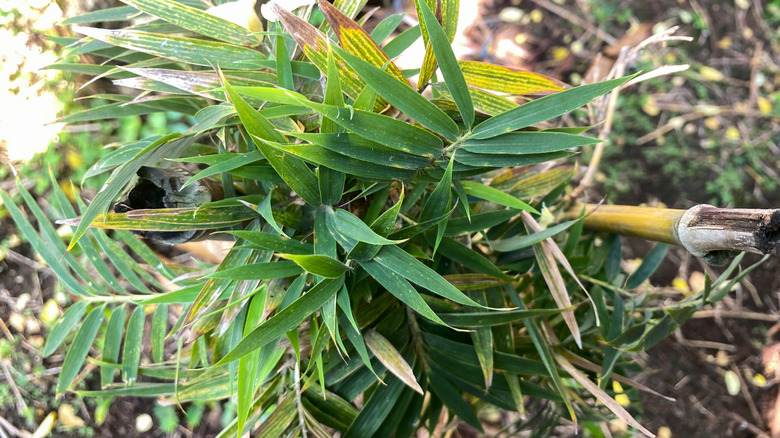12 Beautiful Fast-Growing Houseplants That Thrive In Low Light
There's a dazzling array of houseplants on the market, but before heading to your local nursery or plant shop, it's best to think through the level of lighting your home can provide to your new green roommates. Having plants in your space reduces anxiety and ups your happiness factor, but it won't feel quite as joyful if their leaves lose the vibrant colors that make them unique because they're not getting enough light for proper chlorophyll production. The position of your home's windows, which affects the intensity of the sunlight streaming toward your plants, isn't something you can easily change, and it limits your options. If your space gets light that's weaker or more indirect, growing succulents or cactus plants inside isn't your best bet.
But when one door closes, more open in terms of intriguing plants to consider for your home. There are indoor plants that don't need much sun because of their survival skills — some of them evolved to grow in rainforest conditions where they were typically shaded by higher trees. But some plants that tolerate low light are slow growers, so it's hard to tell when they're doing well. That's why you'll want to look toward the overlap in this Venn diagram and seek out fast growing houseplants that thrive (not just survive) in low light. If this sounds overwhelming, don't worry. This list will assure you that nature finds a way.
Heartleaf philodendron
Heart-shaped leaves and a hardiness to spaces that aren't sunny make the heartleaf philodendron (Philodendron hederaceum) a perfect choice. Direct sunlight can scorch their leaves but they will grow in shade or near a curtained window, conditions that mimic the dappled light of their native Central and South American forests. Growing them in a hanging basket will let their fast-growing leaves trail out gracefully. If the leaves turn yellow, however, it may signal that the plant is in too dark a spot. Make sure to keep them away from children and pets since they have poisonous characteristics.
Arrowhead vine
It's fascinating to watch an arrowhead vine (Syngonium podophyllum) grow: its stems first sprout upright, then the leaves trail like vines and can even climb on surfaces. The growth happens quickly. Although in many ways, the plant is low-maintenance, trimming your arrowhead vine is a good idea if you want it to look neat in the pot instead of tumbling out of a hanging basket.
Purple passion
It's possible to have a pop of color in your houseplant container garden, even in low light, thanks to purple passion (Gynura aurantiaca). Their leaves get their velvet-like quality from purple-tinted hairs, and are one of the pretty plants that only need a bit of water to propagate from cuttings. With reduced light, purple passion is less likely to flower, but that's not a bad thing — the flowers usually have an unpleasant smell. When caring for your purple passion plant, keep the soil moist but water it less often in the colder months.
Dumb cane
Some plants can be just as happy in partial shade or low light as in sun, and dumb cane (Dieffenbachia seguine) is one of them. Its cream-colored patches provide a lovely contrast to its green leaves. This adaptable plant is quick to put forth new growth and can ultimately reach an impressive height of 8 feet tall. The name is a reminder you to keep this plant far from children and pets: it comes from the temporary throat swelling its poisonous sap can cause, leaving those affected speechless.
Polka dot plant
The polka dot plant (Hypoestes phyllostachya) has pink or red spots dotting its tapered green leaves. This color is at its richest when the light is filtered instead of direct, so it may just come to your rescue if you have buildings blocking the windows. If the lack of light is making your plant's leaves stretch too much toward the closest window, you can pinch the stems back. It's also a great choice if you like rapid growth, and it can shoot up to 18 inches tall.
Golden pothos
Pothos plants are famous for being low-maintenance. Golden pothos (Epipremnum aureum), one of the plants in this family, can live in low light for a long time and still grow up to 18 inches in one month. If you choose a variegated variety, the leaves might turn plain green. Bringing the color back is an easy fix — pop it back in a bright spot for a short time, just not long enough for its leaves to get too pale from the sun. Keep it out of the reach of kids, because it can irritate the mouth and skin.
Swiss cheese vine
If you want the stunning effect of a tall vine but don't have much light, consider a Swiss cheese plant (Monstera epipremnoides). In their young stage, they grow toward dark areas before they can attach themselves to something resembling a tree and grow quickly upwards. Even over time, they prefer slightly shaded spaces — especially if you're in a cool climate — and it's important to protect their substantial leaves from getting fried by direct light. The plant has perforations on its leaves that give it the "Swiss cheese" name.
Turtle vine
Turtle vine (Callisia repens) is the rare succulent that grows well in low light. It's sometimes used as ground cover, but the plants can also be happy indoors, where they will still grow fast but trail out of a pot instead of across the ground. It's a good idea to keep it away from a windowsill. Even though turtle vine doesn't like direct light, adjust the placement to give it a bit more sunshine if you see the leaves falling off or the stems stretching too much.
Money tree
Growing a money tree (Pachira aquatica) indoors gives a tropical vibe to your space. They tend to grow quickly indoors, and even though they won't be as tall as they would outside, they can still reach up to 8 feet. They'll do best in partial shade conditions, so consider adding grow lights or situating them near the milder light of an east- or west-facing window. Plant your money tree in soil that drains well and keep it moist, but don't let water pool in the pot.
10. Corn plant
The leaves of the corn plant (Dracaena fragrans), which is a staple of offices and other low-light spaces, drape down gracefully. You can keep it far from windows or even in windowless rooms and still see good results. That being said, moving it into more light will increase its rate of growth. To keep the conditions similar to its tropical home and prevent the leaves from turning brown, consider placing a humidifier near the plant, especially if your home's air is dry.
Asparagus fern
Ferns often grow slowly, so if you're want a lush look without the wait, the trick is to get something with the appearance of a fern that belongs to a different family. Enter the asparagus fern (Asparagus densiflorus). This plant is known to grow quickly without requiring much attention from its plant parent, and it can grow in shaded or partially sunny conditions. For best results, mist your plants periodically and check their roots to see if you need to repot them, making sure to reduce transplant shock in the process.
Arrow bamboo
Bamboo plants are well-known for their ability to take over outdoor spaces, so if you're looking for a quick-growing houseplant, these plants check all the boxes. Arrow bamboo (Pseudosasa japonica) is an example of a type that can grow in the shade, and it's known to do well in pots. Be aware that light does affect the growth rate, though, so it's good to rotate it into brighter spots from time to time if you're not seeing any new leaves.
